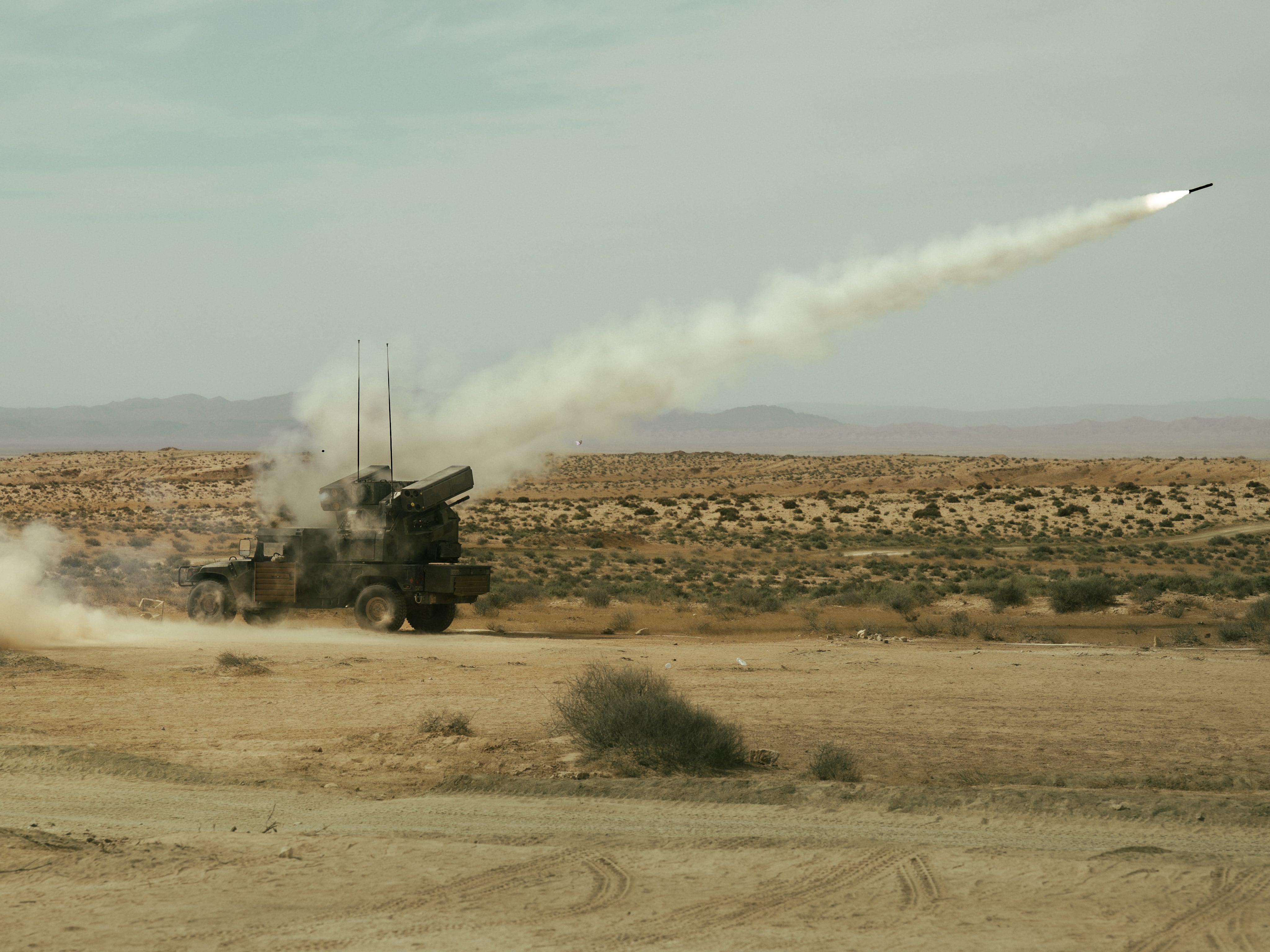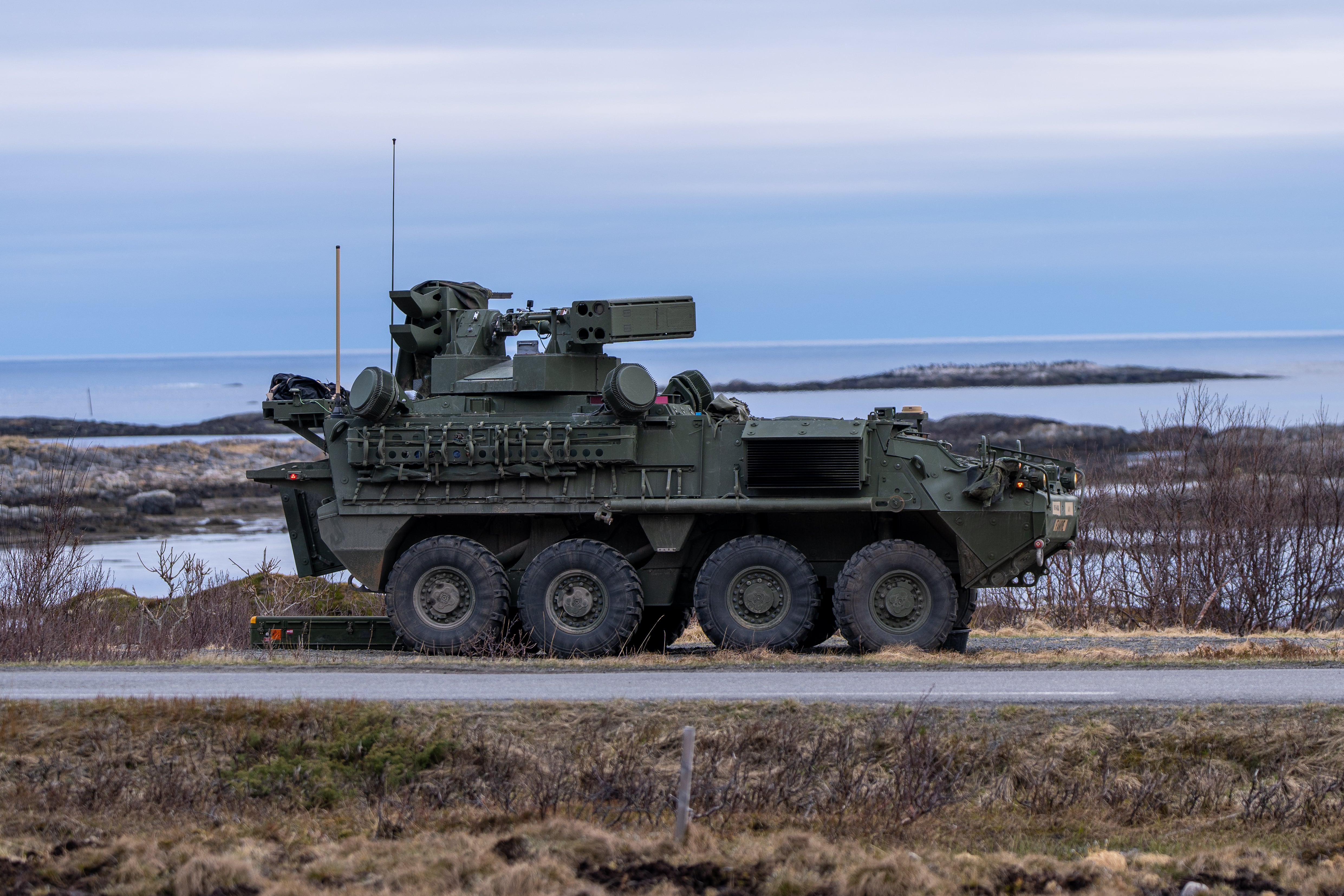The Army’s newest air defense platform recently conducted its first live fire in the Arctic alongside NATO allies while another air defense unit deployed the Avenger Air Defense System in Africa for the first time.
The Sgt. STOUT vehicle, formerly known as Maneuver Short-Range Air Defense, or M-SHORAD, consists of a Stryker vehicle with mounted Stinger missiles, onboard radar and a 30mm cannon.
Soldiers with the 5th Battalion, 4th Air Defense Artillery Regiment, joined NATO allies for Exercise Formidable Shield 2025 in the Arctic Circle near Andoya, Norway, according to an Army release.
Air defenders engaged target drones simulating low-altitude threats over several late-night live-fire events, both from the Sgt. STOUT and dismounted from the vehicle.
Formidable Shield included 16 warships, 27 aircraft and eight ground units from 11 NATO and partner nations between May 6-9. Primarily an integrated air and missile defense exercise that began a decade ago as a naval missile defense exercise, the event has added ground-based air defense assets in response to real-world combat lessons from the Russia-Ukraine War.
Norwegian SHORAD crews on Andoya Island served as the final protective layer for forces during the exercise, destroying any threats that may have made it past naval defenses in the Norwegian Sea.
The Sgt. STOUT is designed to intercept drones, helicopters and cruise missiles, which overlaps with ship-based and high-altitude interceptors NATO forces operate.
“Our radar here can only see so far, but we push what we see to the network, and the ships that maybe can’t see over here get early warning,” said Maj. Ben Bowman, battalion operations officer, in the release. “Likewise, they can see a track further out than we can, so we have a heads-up that something’s coming a lot earlier and that just gives us the edge.”
Norwegian forces operated the National Advanced Surface-to-Air Missile System and the Norwegian Mobile Air Defense System.
U.S. Marines from Marine Air Control Group 28 sent teams with shoulder-launched Stinger missiles and operated a tactical air operations center, according to the release.
“When they see a different ship each night with different drones, different air forces or [ground-based air defense] defending or attacking, it makes it complex for them,” said Cmdr. Fridtjof Joys of the Royal Norwegian Navy.

Meanwhile, some 3,500 miles away in Ben Ghilouf, Tunisia, soldiers with the 1st Battalion, 57th Air Defense Regiment, 52nd Air Defense Artillery Brigade, 10th Army Air and Missile Defense Command, achieved another air defense milestone with the first-ever deployment of the Avenger Air Defense System in Africa.
The Avenger includes eight Stinger missiles mounted on a Humvee for mobile air defense.
The system was deployed as part of this year’s African Lion exercise, an annual exercise on the continent featuring dozens of nations. This year’s exercise takes place through Friday across Ghana, Morocco, Senegal and Tunisia.
“By integrating our systems with those of our allies, we ensure that any potential adversary faces a unified, technologically advanced defense,” said Col. Haileyesus Bairu, the 52nd Air Defense Artillery Brigade commander, in the release. “This makes it far more difficult for hostile forces to threaten the United States or our partners.”
U.S. Army Southern European Task Force, Africa, led the exercise on behalf of the U.S. Africa Command.
“We leave this exercise more prepared, more confident, and more capable than when we arrived,” said Command Sgt. Maj Charles Robinson, 52d Air Defense Artillery Brigade senior enlisted adviser, in the release. “That’s the true measure of success for us, and it’s what keeps our homeland safe.”
Todd South has written about crime, courts, government and the military for multiple publications since 2004 and was named a 2014 Pulitzer finalist for a co-written project on witness intimidation. Todd is a Marine veteran of the Iraq War.





